Rule of cool
ACCESS: Top Secret
- Joined
- 16 January 2024
- Messages
- 519
- Reaction score
- 666
What's the go with using the Australian Ikara setup, with the launcher in the back corner? Is it the nuke depth charge thing?
What's the go with using the Australian Ikara setup, with the launcher in the back corner? Is it the nuke depth charge thing?
Read this post from the first page of the thread you are reading: https://www.secretprojects.co.uk/threads/re-arming-the-leander-frigates.41294/post-590040What's the go with using the Australian Ikara setup, with the launcher in the back corner? Is it the nuke depth charge thing?
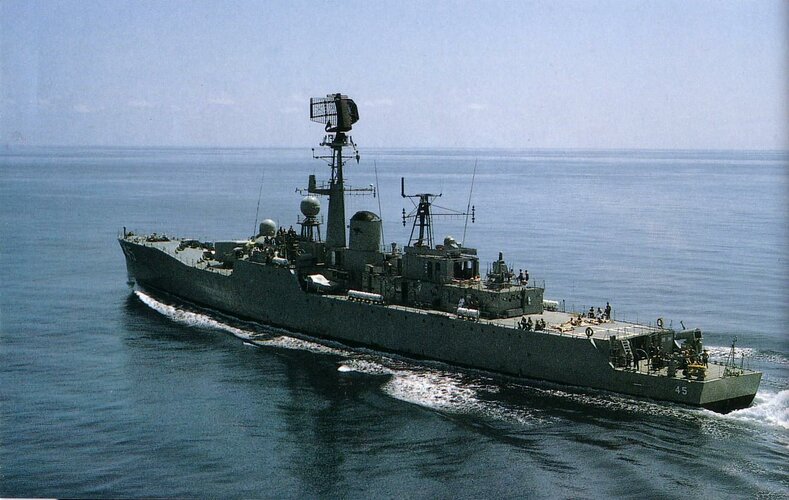
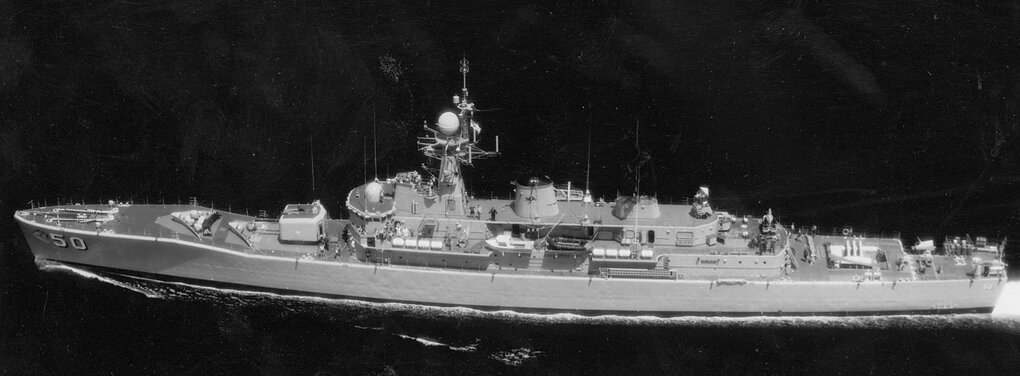
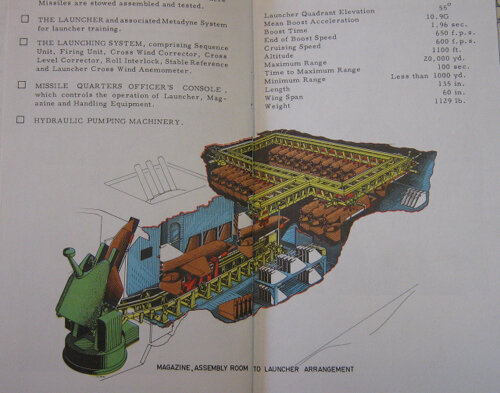
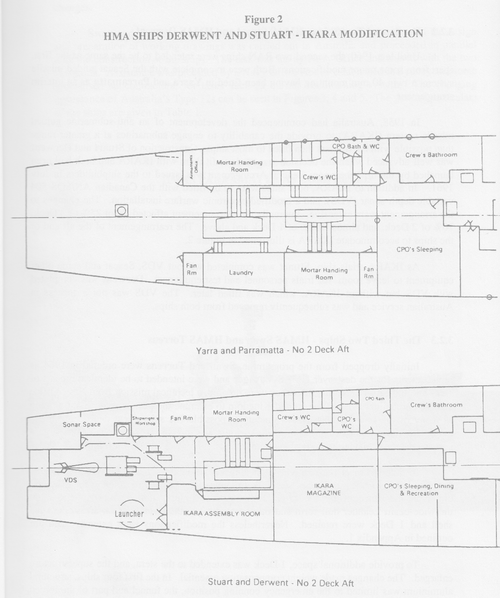
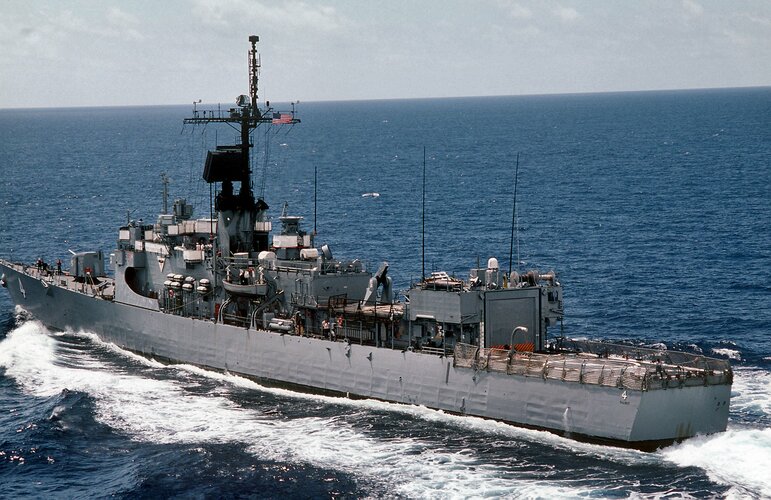
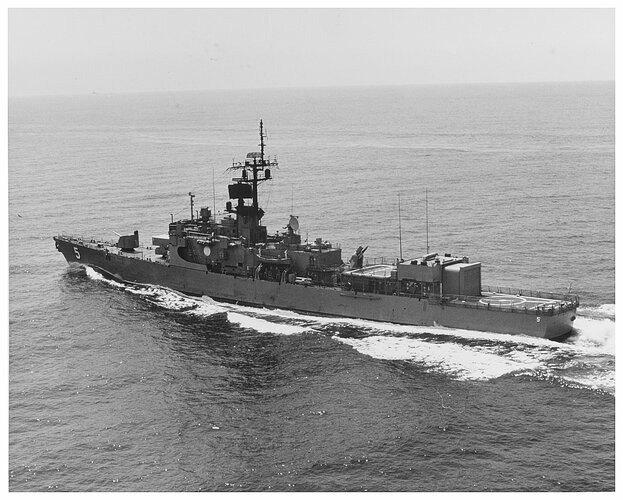
My problem with all the “if only lightweight sea wolf launchers had been developed as planned” AHs that are promulgated is that aiui the problem with Sea Wolf wasnt the launchers - the sextuple things arent a significant issue in themselves (and likely to be lighter than the oft suggested 2x twin or trip or quad in their place) - but the directors and the below deck volume required for the computers.) or to get the UK to go ahead with the 3-shot Sea Wolf launcher that had been intended to replace the Seacat 4-shot launcher 1-for-1 (not likely).
Was Seacat ever developed to a true blindfire capacity? IIRC it got at least as far as semi-auto command to line of sight (keep the crosshair on the target and the guidance system does the steering), but I don't know if it ever made that last step. If it did, a faster airframe might have kept it competitive - knowing that you can't really put a Rapier system on a ship because the hit-to-kill nature of the weapon might not deal with incoming missiles well.the problem with Sea Wolf wasnt the launchers - the sextuple things arent a significant issue in themselves (and likely to be lighter than the oft suggested 2x twin or trip or quad in their place) - but the directors and the below deck volume required for the computers.
First Harpoon missiles delivered in 1977. So arguably not really an option when the upgrade was planned.The problem with the Leanders IMHO is as with the EE Lightning; designed to too tight a spec with too little room for growth. A broad-beam Leander might have enough topweight allowance to take the compact Harpoon launch tube without losing its main guns, but was that even an option when the decision to fit missiles was taken?
A possibility but one thing that recurs during the mid-1950s though was that the Admiralty seemed to think that most small ships couldn't stow enough ammo to make the 3in L/70 a viable fit for AA use.Its not in the spirit of the thread, but I wonder how things would have panned out if the Leanders were armed with the twin 3" guns that the Tigers got. Would that have given them more weight margin for growth? Would it and Sea Cat have been enough air defence so further upgrades could focus an AShMs?
I don't think a nelicopter-equipped River would have retained Ikara. As I understand it, Ikara was developed because the RAN was dissatisfied with the helicopters capable of being carried on a Type 12; basically the Wasp. The Canadian's solution was Beartrap and Seakings on frigates. The RAN's solution was Ikara. As soon as capable frigate/ helicopter solutions became available, the RAN stopped fitting Ikara. For the same reasons I don't think the mooted Seaking-equipped County version for the RAN would have had Ikara either.I think that the RAN's type 12s could have been better modernized in the late 1970s - and here is how.
The only way I can see the RAN's Type 12s getting a better SAM system is either to mount a Sea Sparrow launcher atop the aft superstructure (in place of the Seacat) or to get the UK to go ahead with the 3-shot Sea Wolf launcher that had been intended to replace the Seacat 4-shot launcher 1-for-1 (not likely). A helo spot could be fitted if the Limbo is removed (as per Yarra in 1979-80) and a USN frigate-hangar (moderately short with a telescoping section that retracts into the fixed part of the hangar and is extended out when the helicopter is to be worked on or for inclement weather) could be fitted in place of the aft end of the superstructure (the spaces displaced could be fitted along the sides of the superstructure abreast of the funnel).
The helo for these modernized ships would have to be Lynx HAS.2s (deliveries from 1977 for the RN and other customers), with upgrades until the ships were decommissioned.
See this photo of HMS Yarra in 1984 to get the idea of my proposed modernization (the other 3 older ships would be the same):
View attachment 727526
Swan & Torrens would be similar:
View attachment 727527
Here is the RAN's Ikara layout:
View attachment 727528
View attachment 727529
USN small frigate hangar:
View attachment 727530
View attachment 727531
Needs a bigger warhead.How far along was Rapier at the time?
Or possibly the french 100mm? Not a Nato calibre but in service with a Nato navy (Hamburg class). Big enough (just) for naval gunfire support, to keep the army happy, but also with worthwhile AA capacity. Of course, that saves weight at the sharp end whereas you might want to save it down the blunt end.Needs a bigger warhead.
A single 3"/L70 could have been very useful and in development more could have been made of this.
If modifications along the lines I suggest had been carried out, the helicopter carried would have been a Lynx (or possibly SH-2 Seasprite) - but as helicopters still are weather-restricted keeping Ikara (for a while) would merit strong consideration.I don't think a nelicopter-equipped River would have retained Ikara. As I understand it, Ikara was developed because the RAN was dissatisfied with the helicopters capable of being carried on a Type 12; basically the Wasp. The Canadian's solution was Beartrap and Seakings on frigates. The RAN's solution was Ikara. As soon as capable frigate/ helicopter solutions became available, the RAN stopped fitting Ikara. For the same reasons I don't think the mooted Seaking-equipped County version for the RAN would have had Ikara either.
On another note, I was surprised to see it was the forward Limbo that was removed to accommodate the Ikara system. Never assume, as they say.
For the Aussies, yes. The Southern Ocean basically doesn't have anyone messing around in it, so the Aussies don't have the same push the UKRN does for an ASW weapon that works in weather bad enough to ground the helicopters.If modifications along the lines I suggest had been carried out, the helicopter carried would have been a Lynx (or possibly SH-2 Seasprite) - but as helicopters still are weather-restricted keeping Ikara (for a while) would merit strong consideration.
I do see, unless an improved Ikara airframe is developed that flew faster and or further is developed... then it might continue on.
